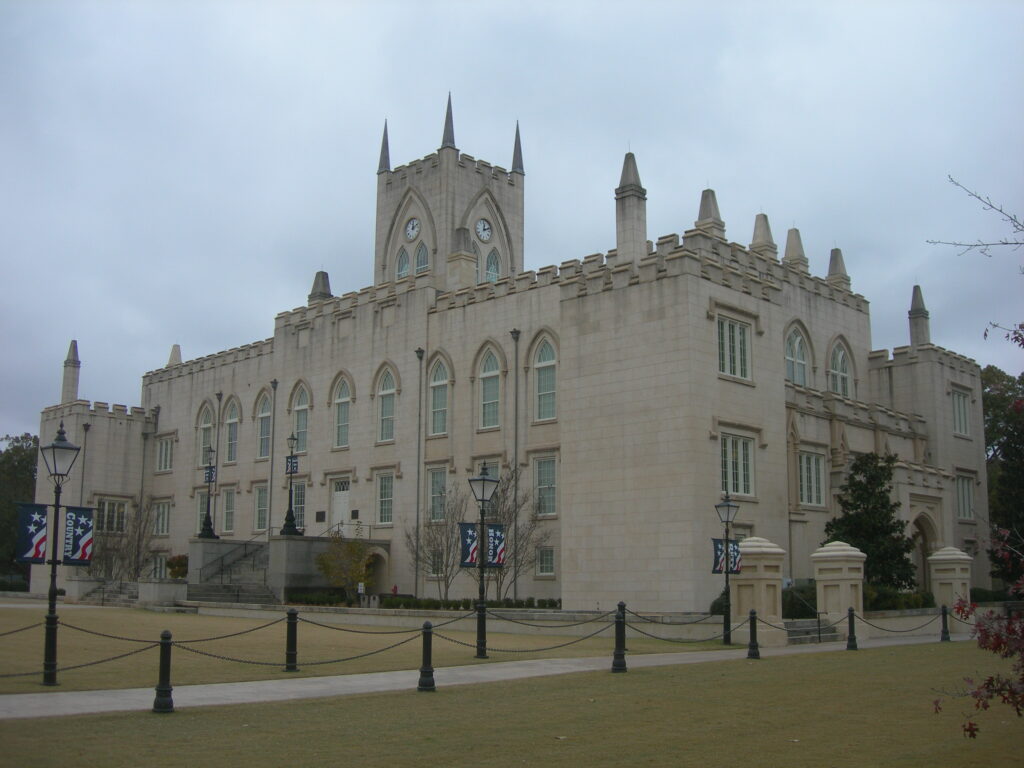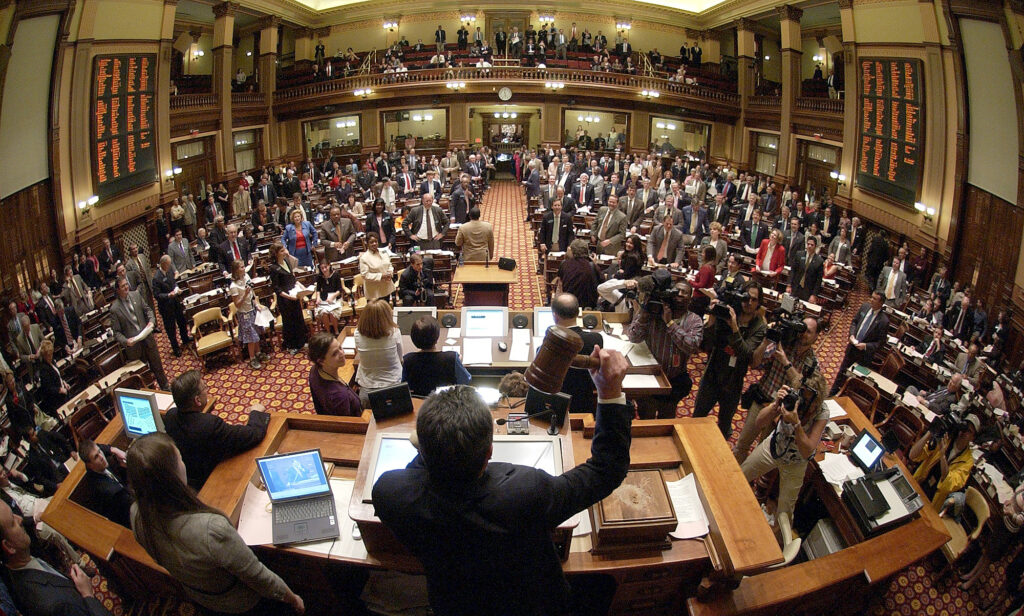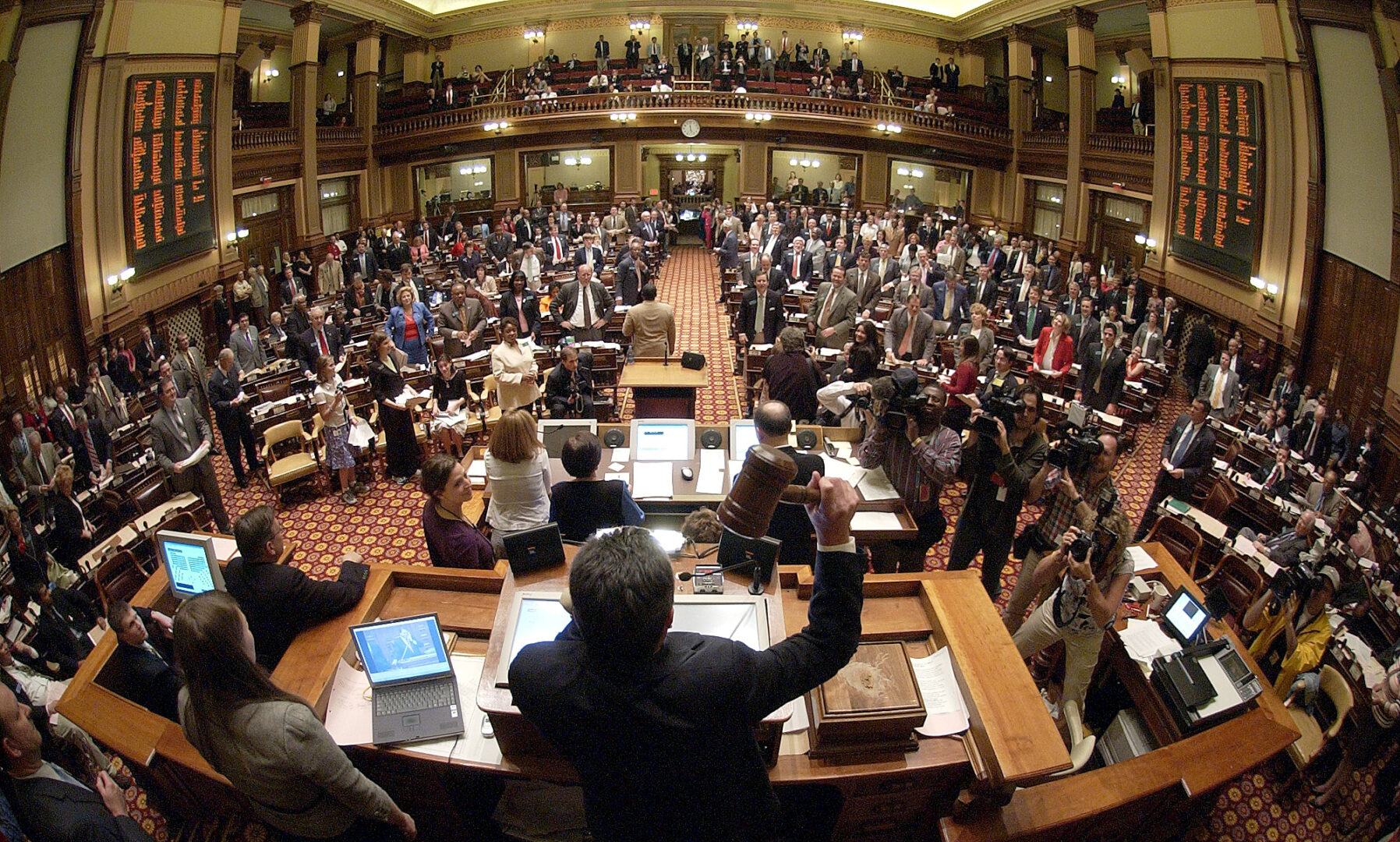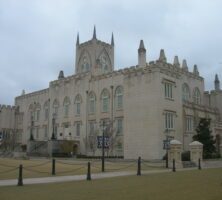A form of representative government has existed in Georgia since January 1751. Its modern embodiment, known as the Georgia General Assembly, is one of the largest state legislatures in the nation. The General Assembly consists of two chambers, the House of Representatives and the senate.
The General Assembly has operated continuously since 1777, when Georgia became one of the thirteen original states and revoked its status as a colony of Great Britain. Since the General Assembly is the legislative body for the state, the location of its meetings has moved along with each move of the state capital. In its earliest days the legislature met first in Savannah, and subsequently in Augusta, Louisville, and Milledgeville. In 1868 the capital—and the assembly—settled permanently in Atlanta. Today the General Assembly meets in the state capitol, an impressive limestone and marble building with a distinctive gold dome and granite foundation. Each chamber is housed in a separate wing.
Every two years, Georgia voters elect members of the legislature. These elections occur in even-numbered years (e.g., 2002, 2004, 2006). The qualifications for holding office in both houses, as well as the size of both chambers, are established in the Georgia state constitution.
House of Representatives
The House of Representatives, sometimes referred to as the lower house, is the larger of the two chambers. Its 180 members represent districts from across the state, and it is presided over by the Speaker of the House, who is elected by the entire membership. The Speaker has always been a member of the majority political party and has the power to schedule debates, to vote, and to assign members to committees. The current Speaker of the House, David Ralston, was selected in 2010. There are three other important leaders in the house: the majority leader, the minority leader, and the floor leader. The majority leader is responsible for advancing the agenda of the majority party in the house, while the minority leader is responsible for advancing the cause of the minority party. The floor leader promotes the governor’s interests in the chamber.

Photograph by Jimmy Emerson, DVM
Much of the work of the house is done in thirty-six standing committees. At the start of each two-year session, each member is assigned to two or three committees, which are organized by such topics as agriculture, education, or taxes. Each political party’s leadership selects members to serve on the committees, which ensures that the parties are effectively represented in the process. Thus the party composition of committees is proportional to the party composition of the house. The Speaker of the House selects the chairs of each committee; since the Speaker belongs to the majority party in the chamber, all the committees are chaired by members of the majority party. Legislation passes through the committees, where it can be amended, changed, or killed. Members, therefore, actively seek to be placed on committees that deal with issues important to them personally and to their constituents.
To serve in the House of Representatives, an individual must be at least twenty-one years old. Other requirements include residency for at least a year in the district that he or she represents and residency in Georgia for at least two years.
Senate
The state senate is very similar to the house, but the senate is a smaller body, with fifty-six members who represent districts from around the state. The chief officer of the senate is the lieutenant governor. Unlike the Speaker, who is elected by the members of the house, the lieutenant governor is elected by all the voters of the state. Thus, the lieutenant governor may belong to a different political party than the majority of the senators, as was the case in the 2003-4 and 2005-6 sessions when Lieutenant Governor Mark Taylor, a Democrat, presided over a majority-Republican senate. This scenario requires careful political balancing and the investment of significant authority in the president pro tempore of the senate, who is the leader of the majority party.

Courtesy of Georgia Department of Economic Development.
There are twenty-six committees in the senate, and senators are required to serve on at least three committees during their two-year terms in the General Assembly. As in the house, the party affiliations of senate committees are proportional to the party affiliations of the senate as a whole. The lieutenant governor appoints the chairs of the committees, which resulted in an unusual situation in the 2003-4 session. The Republican Party was the majority party in the senate, but the lieutenant governor appointed Democrats to chair some committees.
To serve in the senate, an individual must be at least twenty-five years old. Other requirements include residency for at least a year in the district that he or she represents and residency in Georgia for at least two years.
The Assembly in Operation
Each January representatives congregate at the state capitol for the start of the legislative session, which lasts for forty days, to deliberate matters of importance to the citizens of the state. The forty days are not always continuous, and during the time when the chambers are not in session, members generally work in committees or return home to meet with constituents. The General Assembly uses a committee system to accomplish its legislative tasks. Since they meet year round, even when the legislature is not in session, committees can consider proposed legislation at length and reach some form of consensus before the proposals reach the floor for a vote. Such a system allows legislators to specialize by concentrating on a few major topics and also allows the legislative process in Georgia to move more efficiently. Typically, the legislature adjourns in late March, after the major legislative business has been completed. From time to time the governor may call the General Assembly into a special session for a set number of days.

Courtesy of Atlanta Journal-Constitution.
The most important function of the General Assembly is to pass the state’s operating budget each year. In fact, approximately half of the hours spent in session are related to the budget. This includes establishing spending priorities and setting tax rates. Additionally, lawmakers must enact other laws on a broad array of topics from education to roads and transportation.
Another task of the General Assembly is to consider all proposed amendments to the Georgia constitution. A two-thirds vote in both houses is the primary means for approving resolutions to place proposed constitutional changes on the ballot. Voters will then decide if the constitution is to be amended.
A special task that the General Assembly must undertake every ten years is the drawing of legislative district lines to create the maps used for the state house and state senate district boundaries. The General Assembly also establishes the district lines for Georgia’s delegation to the U.S. House of Representatives.
Assembly Members
A number of famous Georgians have served in the General Assembly. Jimmy Carter, the only Georgian ever to be elected president of the United States, served in the state senate during the 1960s. Several civil rights leaders, including Julian Bond and Hosea Williams, have served in the General Assembly. Most governors and U.S. senators from the state served in one of the two chambers before running for higher office.
Several members have served lengthy terms, most notably Hugh Gillis of Soperton, with more than fifty years of combined service in both houses of the legislature. No discussion of longevity in the General Assembly would be complete without mention of Tom Murphy of Bremen, who was Speaker of the House between 1974 and 2002. Murphy was the longest-serving Speaker in the nation when he was defeated in his 2002 reelection bid.
Though the General Assembly is more diverse than in years past, it remains overwhelmingly white and male; in 2015, just 23 percent of the members were women and 25 percent were African American.









